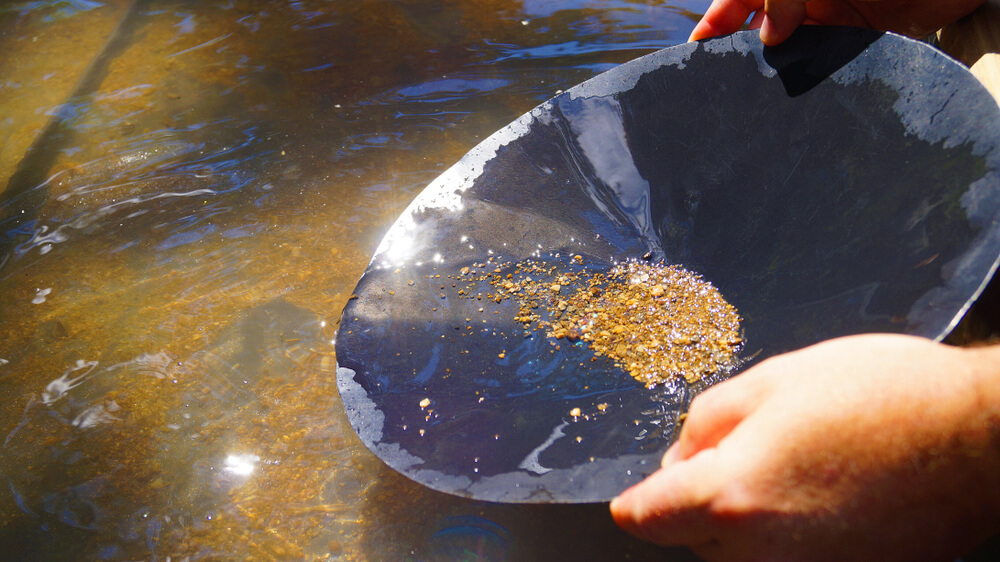
Gold Fineness: A Complete Guide
Pure gold is valuable but also a soft metal. The precious metal can easily bend or deform. Therefore, gold jewelry is often made of more than just pure gold. There is a slight impurity or a significant presence of other metals. Other naturally occurring metals, usually copper, silver, zinc, etc., are added to boost gold’s durability and maintain its form. “Fineness” measures how much pure gold the less pure gold or gold alloy has.

Gold fineness is a crucial concept unveiling the actual makeup of gold alloys. It probes into pure gold’s proportion to other metals in a given alloy, highlighting the subtle changes that impact the item’s properties, value, and applications. Also, learning the interplay between gold market liquidity and gold fineness helps gain insights into the various mechanisms underpinning the huge ecosystem surrounding gold.
Table of Contents
This article shall help you explore the intricate realm of gold fineness, gazing beyond the superficial and delve into its purity. We’ll cover the following topics:
- A brief introduction to gold fineness
- How to measure gold fineness
- How does the millesimal scale and karat (not carat) system interpret gold fineness
- Answers to some important questions, particularly relating to “good delivery” bullion bars
Read more: Gold Purity Measurements
Read on to learn gold fineness in deep, the practical implications it has across various sectors, the reasons for choosing particular gold fineness levels, and more.
What is Gold Fineness?

“Gold fineness” denotes the purity of the metal—be it in the form of jewelry, gold bullion bars, bullion coins, etc. Gold’s fineness is usually expressed as a percentage or numerical value. The greater the number, the purer or finer the gold piece is. If the figure is lesser than the maximum number, it indicates the presence of impurities or other precious metals.
Fineness, however, doesn’t identify the other metals used in a gold alloy. That requires a fundamentally more advanced analysis approach in the form of XRF (X-ray fluorescence), fire assaying, etc. These processes require specialized expertise and equipment and must be performed within a protected, regulated environment.
Gold Fineness: Measuring/Expressing It Numerically
Gold purity is measured using a method called millesimal fineness. The primarily European practice represents gold content in portions per thousand. If a gold item has a fineness of 910, it means 910 parts out of the total 1,000 parts are pure gold. The remaining 90 parts are other metals. A 910 fineness means the item is 91 percent real gold in percentage language. The millesimal scale could be expressed as a percentage (999 percent), whole number (999), or decimal (.999). It’s worth noting that the three-figure number, 999, is also the most common fineness.
Gold fineness can also be expressed as karats. The karat system uses the number 24 as its denominator, or gold purity is denoted as a segment of 24 to signify maximum purity. The closer the karat figure is to 24, the purer the gold is. A 24-karat gold piece is considered fine gold and is the karat equivalent to 999 (three nines fine) millesimal fineness. Eighteen-karat gold is 75 percent pure gold or 750 on the fineness scale.
A karat rating is not as precise as the millesimal system numbers and is, therefore, not as commonly used in bullion and financial markets. The millesimal scale facilitates finer gradations and helps determine the exact gold content in investment-grade gold bars and bullion coins. The karat system is more commonly used to measure gold purity in jewelry. Karat ratings and hallmarks are usually stamped on the insides of gold jewelry.
Note that both purity measurement systems are widely used, with the millesimal scale being much more common in Europe and other regions outside North America.
Millesimal Fineness Range
The purest gold is denoted 999.9 on the millesimal scale. It is referred to as “four nines,” and the purity level is observed in commemorative coins. The minimum standard or purity number is 333. Such a low purity level is opted for affordability, increased durability, or specific design requirements that cannot be achieved with purer gold.
| Millesimal Fineness | Gold Content | Description | Common Applications |
| 333 | 33.3 percent | 8K gold | Industrial, affordable jewelry |
| 375 | 37.5 percent | 9K gold | Budget jewelry, everyday wear |
| 416 | 41.6 percent | 10K gold | Budget jewelry, fashion jewelry |
| 585 | 58.5 percent | 14K gold | Fine jewelry, high-quality gold items, engagement rings |
| 750 | 75 percent | 18K gold | Fine jewelry, luxury watches, and other luxury goods |
| 916 | 91.6 percent | 22K gold | Cultural jewelry, investment-grade bullion |
| 999 | 99.9 percent | 24K or four nines pure gold | Investment-grade bullion coins, bars, collector’s goods |
The aforementioned millesimal scale numbers are commonly used figures. They do not represent all digits on the scale. Similarly, the corresponding applications are not exhaustive. The gold alloys, based on their properties and user requirements, could be used in several other industries and forms. The usage varies by country based on the other base metals used, standard practices, etc.
As stated earlier, 333 millesimal scale number is not as common but is valued in markets that utilize alloys with the bare minimum gold purity. The Royal Canadian Mint ensures a fineness of 999.9 to make its commemorative coins. In 1957, the Perth Mint refined the purest gold, 999.999 on the millesimal scale.
Karat Range
Karats range from 24 to 1 karat. Ten-karat is the least pure gold a gold alloy must have to be considered gold. Eight karats represent the bottom threshold or are legally allowed as gold in some regions, such as Europe. Eight karats denote 333 on the millesimal scale or 33.3 percent gold content. Most manufacturers, however, begin at ten karats because it represents the minimum tolerances.
A 10-karat alloy comprises around 41.7 percent pure gold. Eight or even ten karats are low-purity gold alloys and are not used to make fine jewelry. They are better suited for industrial applications and decorative purposes. A minimum of 14-karat gold is needed to render a fine jewelry gold piece desirable.
Read more: Is it a Fake Gold Bar?
Conclusion
Gold has undoubtedly captivated human minds with its enduring value and radiant charm. It’s revered as a sign of wealth, beauty, and power. But, as made clear, the dazzling façade covers a deeper quality measure, or gold varies in its constituents. Hopefully, this article helped you understand and appreciate the purity of gold. The next time you buy gold jewelry or invest in gold bullion, do not overlook the marks and numbers representing the item’s fineness.
FAQs
Why is pure gold never 1000 on the millesimal scale?
Pure gold is usually represented as 999.9 or 999 instead of 1000 for practicality and the constraints of gold manufacturing. Achieving 100 percent purity is almost implausible, thanks to traditional refining techniques. Even the commercially available pure gold items, such as bullion coins or bars, that come labeled as “999.9” or “999” may contain trace quantities of impurities.
Those contaminations could be small amounts of elements or other metals that are challenging to remove in the refining process altogether. But because the other metals’ presence is negligible and does not threaten the gold’s integrity or appearance, efforts are usually not put to eliminate them entirely.
How “fine” are Good Delivery bars?
A Good Delivery bar is a gold bar known for its size and purity. It’s the purest type of gold bullion bar made currently. “Good Delivery” is a specification denoting the rules the London Bullion Market Association laid out regarding gold and silver bullion bars. Good Delivery bars set the benchmark for large-scale global bullion market transactions. They usually weigh a kilogram or 12.4 kg (400 troy ounces), which can go up to 13 kg (430 troy ounces).
A GD bar is usually 8.3 to 11.4 inches long, 2.2 to 3.3 inches wide, and 0.98 to 1.77 inches tall. Gold, The minimum fineness requirement for a gold bar is 995, or the bars should be at least 99.5 percent pure gold. But most exceed the base purity level and have fineness ranging from 99.99 to 99.999 percent pure gold. Good Delivery bars are also made of fine silver with a purity of at least 999.
Good Delivery bars set the standard and assure buyers and sellers trading gold bullion. The fineness of the gold is often tested and verified by independent assay offices or accredited laboratories. GD bars are typically used in major global markets and gold reserves of central banks, governments, and the IMF.
How was gold fineness measured before the millesimal and karat systems?
Before the creation of the karats or the millesimal scale, the purity of gold was measured using stones, fire assays, and visual cues. The “touchstone method” technique was used, which entailed rubbing the gold against a dark, rough stone, leaving behind marks on the rock. Different acid solutions are then applied to the gold marks, and how the acid reacted with the streaks helped determine the gold’s purity.
In the fire assaying method, a small gold alloy sample is melted with lead oxide in a crucible (a metal or ceramic container). The lead soaks up all the impurities after some time, leaving behind the gold. The weights of the remaining gold and the gold alloy are then compared to calculate the gold content. Another less accurate technique entailed comparing the gold alloy’s color to gold items with verified purity. This observation method is based on the knowledge that a more intense, brighter yellow meant higher gold content.


